When it comes to skin breakouts, whiteheads are just as aggravating as their counterparts. Surprisingly, most of us never bother researching the cause of whiteheads, despite having spent the majority of our adult lives honing our self-control so that we can, for once, stop popping them. But no longer! It's finally time to put an end to our whitehead problems.
Whiteheads are a type of acne characterized by small, white bumps on the skin. While they are not harmful, they can be unsightly and difficult to treat. Here are some tips from a doctor on how to get rid of whiteheads permanently:
-
Keep your skin clean: One of the main causes of whiteheads is excess oil and dirt on the skin. Make sure to wash your face twice a day with a gentle cleanser. Avoid scrubbing your face too hard or using harsh products that can irritate your skin.
-
Use topical treatments: Topical treatments that contain salicylic acid, benzoyl peroxide, or retinoids can be effective in treating whiteheads. These ingredients work by unclogging pores and reducing inflammation. Be sure to follow the instructions on the label and start with a lower concentration to avoid irritation.
-
Avoid picking or squeezing: While it may be tempting to pop whiteheads, this can actually make them worse and lead to scarring. Instead, leave them alone and let them heal on their own.
-
Maintain a healthy diet: Eating a balanced diet that is rich in fruits, vegetables, and lean proteins can help improve the overall health of your skin. Avoid foods that are high in sugar and processed foods, as these can worsen acne.
-
Manage stress: Stress can cause hormonal changes that can lead to acne. Practicing stress-reducing techniques such as meditation, yoga, or deep breathing can help improve the health of your skin.
-
Consider professional treatments: If topical treatments and lifestyle changes do not work, consider seeing a dermatologist. They can offer a variety of treatments such as chemical peels, laser therapy, or extractions that can help get rid of whiteheads permanently.
Remember, getting rid of whiteheads permanently may take time and patience. It's important to be consistent with your skincare routine and make lifestyle changes to support healthy skin.
What causes Whiteheads
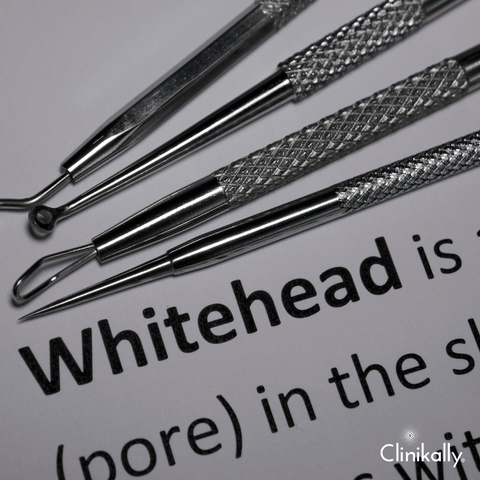
Whiteheads, also known as closed comedones, are a type of acne that forms when dead skin cells, oil, and bacteria accumulate in hair follicles on the skin. More specifically, they occur when the sebaceous glands in the skin produce too much sebum, which mixes with dead skin cells and becomes trapped in the hair follicle, leading to the formation of a white or flesh-coloured bump.
Various factors can contribute to the development of whiteheads, including:
-
Hormonal changes: Hormonal fluctuations during puberty, menstruation, pregnancy, and menopause can increase sebum production and trigger the development of whiteheads.
-
Genetics: People with a family history of acne are more likely to develop whiteheads.
-
Skincare products: Certain skincare products, such as heavy creams or lotions, can clog pores and contribute to the formation of whiteheads.
-
Diet: Some studies suggest that a diet high in sugar and dairy products may increase the risk of developing acne, including whiteheads.
-
Environmental factors: Exposure to pollutants, humidity, and other environmental factors can also contribute to the development of whiteheads.
Overall, the causes of whiteheads are complex and can vary from person to person. Effective treatment typically involves a combination of skincare, lifestyle changes, and, in some cases, medication.
Where do Whiteheads occur

Whiteheads are a common type of acne that usually occur on the face, particularly on the forehead, chin, and nose. However, they can also appear on other parts of the body such as the chest, back, and shoulders. Whiteheads are small, raised, and flesh-colored bumps that occur when pores become clogged with oil, bacteria, and dead skin cells. They are a mild form of acne and can usually be treated with over-the-counter acne products or by maintaining a good skincare routine.
Whiteheads on nose
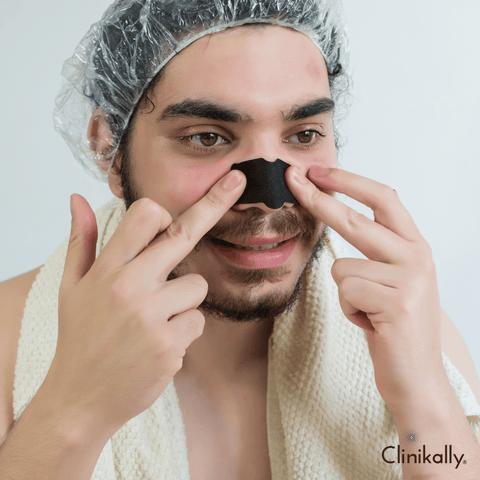
Whiteheads on the nose are a common skin issue that many people experience. Whiteheads are a type of acne that develops when hair follicles become clogged with oil, dead skin cells, and bacteria. The whitehead appears as a small, white or yellowish bump on the surface of the skin. Here are some tips to help prevent and treat whiteheads on the nose:
-
Keep your face clean: Wash your face twice a day with a gentle cleanser to remove excess oil, dirt, and dead skin cells.
-
Use a mild exfoliating scrub: Regular exfoliation can help to remove dead skin cells and prevent the build-up of oil and bacteria in your pores.
-
Avoid touching your face: Touching your face can transfer bacteria and oil from your hands to your skin, which can worsen whiteheads.
-
Use non-comedogenic products: Use skincare products that are labeled non-comedogenic, which means they won't clog your pores.
-
Apply a topical acne treatment: Over-the-counter acne treatments containing benzoyl peroxide, salicylic acid, or retinoids can help to clear whiteheads.
If your whiteheads on the nose persist or become severe, you may want to consult with a dermatologist who can provide personalized recommendations and prescribe stronger treatments if needed.
Whiteheads on lip
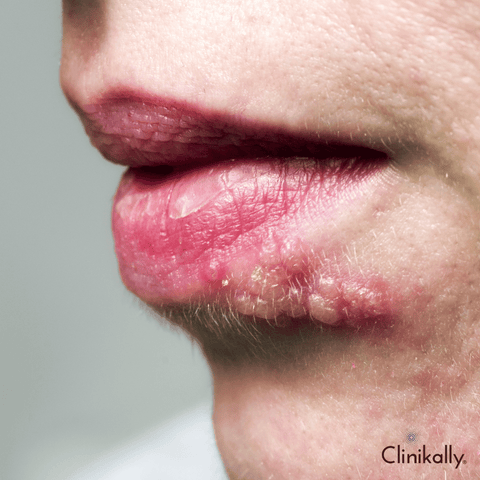
Whiteheads on the lips can be a common occurrence and can be caused by a variety of factors. Here are some possible causes and solutions:
-
Hormonal changes: Hormonal changes can cause an increase in oil production, leading to the formation of whiteheads on the lips. This is especially common during puberty, menstruation, and pregnancy.
-
Poor hygiene: Poor hygiene can lead to the buildup of bacteria and dead skin cells, leading to the formation of whiteheads on the lips.
-
Use of lip products: Some lip products such as lip balms, lipsticks, and lip glosses can clog the pores and lead to the formation of whiteheads on the lips.
-
Diet: A diet high in processed foods, sugar, and dairy can cause an increase in oil production, leading to the formation of whiteheads on the lips.
-
Medical conditions: Certain medical conditions such as acne, rosacea, and perioral dermatitis can cause whiteheads on the lips.
In summary, whiteheads on the lips can be caused by a variety of factors, and the treatment depends on the underlying cause. Maintaining good hygiene, using non-comedogenic lip products, and eating a healthy diet can help prevent the formation of whiteheads on the lips. If you suspect a medical condition, it is important to see a dermatologist for proper diagnosis and treatment.
Whiteheads on chin
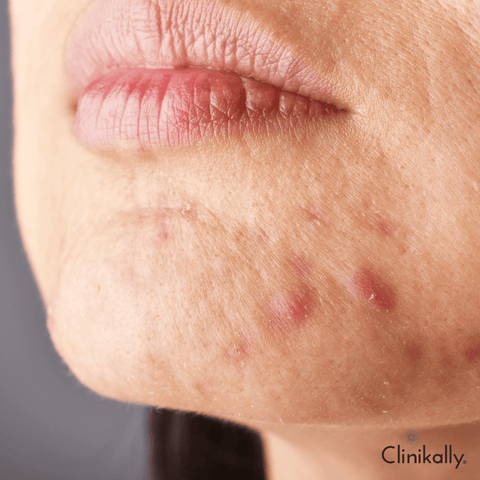
Whiteheads on the chin are a common type of acne that occurs when pores on the skin become clogged with oil, dead skin cells, and bacteria. Here are some tips for treating whiteheads on the chin:
-
Cleanse your skin: Use a gentle, oil-free cleanser twice a day to keep your skin clean and remove excess oil and dead skin cells.
-
Exfoliate: Regular exfoliation can help to remove dead skin cells and unclog pores. Use a gentle exfoliating scrub once or twice a week.
-
Apply a spot treatment: Look for a spot treatment that contains benzoyl peroxide or salicylic acid, which can help to kill bacteria and reduce inflammation.
-
Don't pick or squeeze: Avoid picking or squeezing whiteheads, as this can cause further inflammation and scarring.
-
Keep your hands off your face: Touching your face can transfer bacteria and oil from your hands to your skin, which can lead to breakouts.
-
Use non-comedogenic products: Use products labelled as "non-comedogenic," which means they are less likely to clog pores and cause acne.
If you find that your whiteheads persist despite these measures, it may be a good idea to consult a dermatologist for additional treatment options.
Whiteheads on cheek
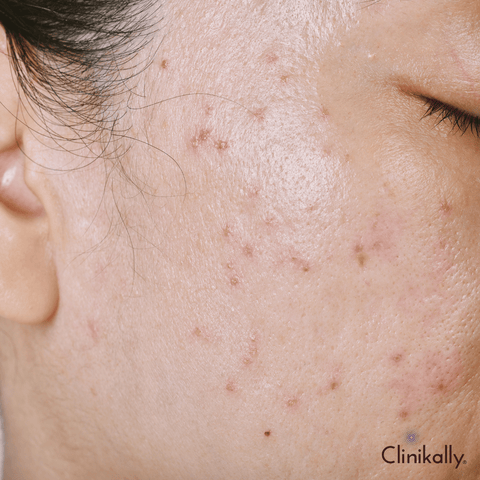
Whiteheads on the cheek are a common type of acne that occurs when pores become clogged with oil, dead skin cells, and bacteria. They appear as small, white or flesh-colored bumps that are slightly raised from the surface of the skin. Here are some tips to help prevent and treat whiteheads on the cheek:
-
Cleanse your face twice a day with a gentle cleanser to remove dirt, oil, and makeup that can clog pores.
-
Avoid touching your face, as this can transfer bacteria and oil from your hands to your skin.
-
Use non-comedogenic skincare products that are formulated to not clog pores.
-
Exfoliate once or twice a week to remove dead skin cells that can contribute to clogged pores.
-
Apply a spot treatment containing benzoyl peroxide, salicylic acid, or tea tree oil to the affected area to reduce inflammation and kill bacteria.
-
Avoid picking or squeezing whiteheads, as this can lead to scarring and further inflammation.
If these measures do not improve your whiteheads, it may be a good idea to see a dermatologist who can prescribe stronger treatments, such as topical or oral medications.
Whiteheads on forehead
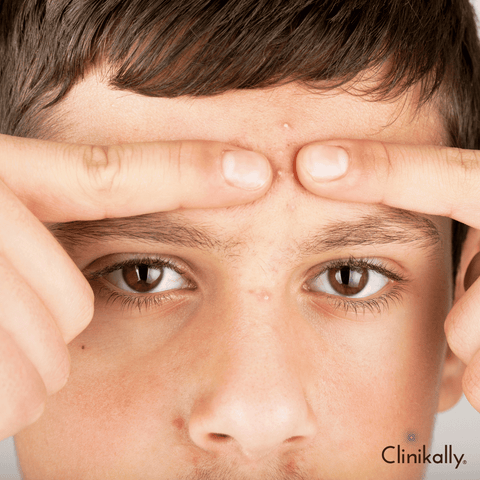
Whiteheads on the forehead are a common type of acne that is caused by the buildup of oil, dead skin cells, and bacteria in the hair follicles. They appear as small, white or flesh-colored bumps on the skin's surface and can be difficult to treat without proper skincare. Here are some tips to help prevent and treat whiteheads on the forehead:
-
Keep your skin clean: Use a gentle cleanser to wash your face twice a day to remove excess oil and dirt from the skin's surface.
-
Exfoliate regularly: Exfoliation helps remove dead skin cells that can clog pores and lead to whiteheads. However, be gentle while exfoliating to avoid irritating the skin.
-
Avoid touching your face: Touching your face can transfer bacteria and oil from your hands to your skin, which can lead to breakouts.
-
Use non-comedogenic products: Non-comedogenic products are designed not to clog pores and are a good option for people prone to whiteheads.
-
Try over-the-counter acne products: Look for products containing benzoyl peroxide, salicylic acid, or alpha hydroxy acids, which can help unclog pores and reduce whiteheads.
If these tips don't help, or if you have severe or persistent whiteheads, you may want to consult a dermatologist for further treatment options
Whiteheads on back
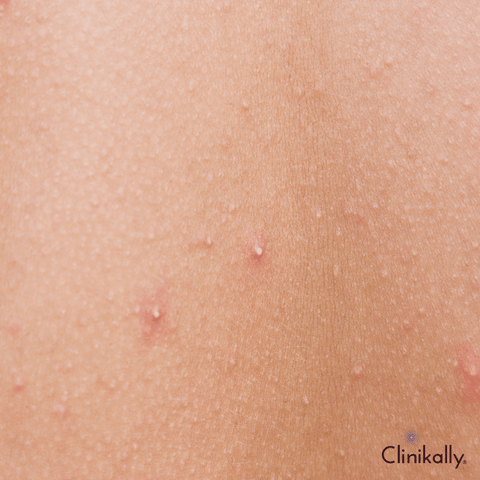
Whiteheads on the back are a common type of acne that can be caused by clogged hair follicles or pores. They appear as small, white bumps on the skin and can be accompanied by blackheads, pimples, or cysts. There are several ways to treat whiteheads on the back:
-
Keep your skin clean: Wash your back regularly with a gentle cleanser to remove excess oil and dirt from your skin. Avoid using harsh soaps or scrubbing your skin too vigorously, as this can irritate your skin and worsen your acne.
-
Exfoliate: Use an exfoliating scrub or brush to remove dead skin cells and unclog your pores. Be gentle when exfoliating, as over-exfoliating can cause more harm than good.
-
Use topical treatments: Apply topical treatments such as benzoyl peroxide or salicylic acid to your back to help unclog your pores and reduce inflammation. These treatments can be found in over-the-counter acne products or prescribed by a dermatologist.
-
Avoid tight clothing: Tight clothing can trap sweat and oil against your skin, which can worsen your acne. Wear loose, breathable clothing instead.
-
Consult a dermatologist: If your acne is severe or persistent, consult a dermatologist. They can prescribe medications or suggest more advanced treatments, such as laser therapy or chemical peels, to help clear your acne.
Remember that treating whiteheads on the back takes time, and it's important to be patient and consistent with your skincare routine. If you have any concerns about your acne or skincare, speak with a healthcare provider or dermatologist for personalized advice.
Whiteheads on scalp
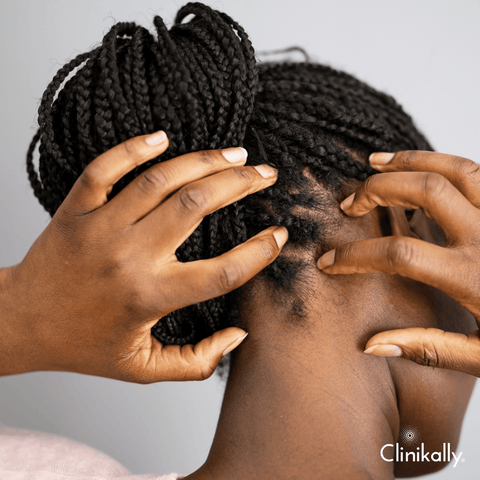
Whiteheads on the scalp are a common skin condition that can be caused by a variety of factors, including genetics, hormonal changes, poor hair hygiene, and certain hair products. The technical term for whiteheads on the scalp is "folliculitis," which refers to the inflammation of hair follicles. These whiteheads can appear as small, pus-filled bumps on the scalp, and may be itchy or painful.
Here are some possible causes and treatments for whiteheads on the scalp:
-
Poor hair hygiene: Not washing your hair regularly can lead to a build-up of oil, dirt, and dead skin cells on the scalp, which can clog hair follicles and lead to whiteheads. To prevent this, wash your hair with a gentle shampoo at least twice a week.
-
Hormonal changes: Hormonal changes can also cause whiteheads on the scalp, especially in women who are going through puberty, pregnancy, or menopause. In this case, it is best to consult with a healthcare professional for proper diagnosis and treatment.
-
Hair products: Certain hair products, such as hair gels, hairsprays, and styling waxes, can clog hair follicles and lead to whiteheads on the scalp. Try switching to natural or organic hair products, and avoid using them excessively.
-
Medical conditions: Certain medical conditions, such as acne or psoriasis, can also cause whiteheads on the scalp. If you suspect that you have a medical condition, consult with a healthcare professional for proper diagnosis and treatment.
In general, it is important to maintain good hair hygiene and avoid using harsh chemicals on the scalp. If whiteheads persist or become painful, it is best to consult with a healthcare professional for proper diagnosis and treatment.
How can I remove whiteheads: Treatment & Home Remedies
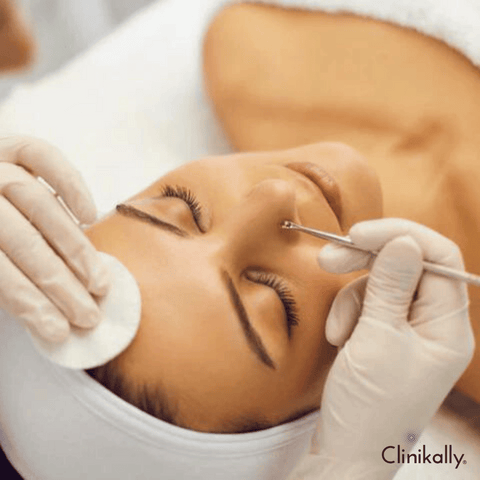
Whiteheads, also known as closed comedones, are small bumps that appear on the skin. They are caused by clogged pores that are filled with oil, dead skin cells, and bacteria. Fortunately, there are several treatment options and home remedies that can help to remove whiteheads.
-
Salicylic acid: Salicylic acid is a beta hydroxy acid that can help to unclog pores and exfoliate the skin. Look for over-the-counter products that contain salicylic acid, such as cleansers, toners, and spot treatments.
-
Benzoyl peroxide: Benzoyl peroxide is an antibacterial agent that can help to reduce inflammation and kill bacteria. It can be found in many over-the-counter acne treatments, such as cleansers, creams, and gels.
-
Retinoids: Retinoids are derivatives of vitamin A that can help to unclog pores, exfoliate the skin, and reduce inflammation. They are available in both prescription and over-the-counter formulations.
-
Extraction: Whiteheads can be manually extracted by a dermatologist or esthetician. This involves using a special tool to gently remove the contents of the whitehead.
Home remedies for whiteheads removal at home
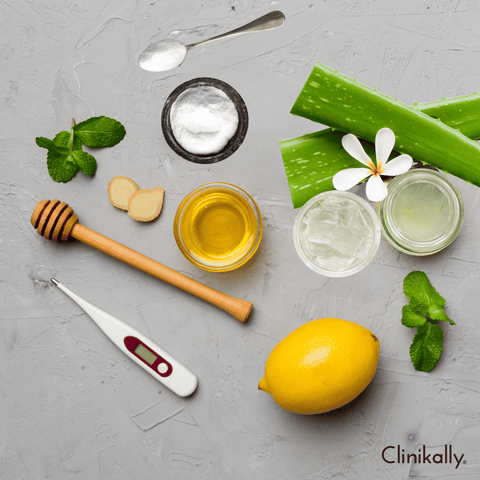
Whiteheads are a common form of acne that can occur when oil, dead skin cells, and bacteria clog your pores. While over-the-counter acne treatments and prescription medications are available to treat whiteheads, there are also some effective home remedies that can help reduce their appearance. Here are some home remedies for whiteheads removal:
-
Tea tree oil: Apply a few drops of tea tree oil directly to the affected area using a cotton ball or swab. Tea tree oil has antibacterial properties that can help reduce inflammation and kill bacteria.
-
Lemon juice: Apply freshly squeezed lemon juice to the affected area using a cotton ball. Lemon juice has astringent properties that can help shrink pores and reduce oil production.
-
Baking soda: Mix baking soda with water to create a paste and apply it to the affected area. Baking soda can help exfoliate dead skin cells and unclog pores.
-
Honey: Apply a small amount of honey to the affected area and leave it on for 15-20 minutes before rinsing off with warm water. Honey has antibacterial properties that can help reduce inflammation and kill bacteria.
-
Aloe vera: Apply aloe vera gel directly to the affected area and leave it on for 10-15 minutes before rinsing off with warm water. Aloe vera has anti-inflammatory properties that can help soothe irritated skin.
It's important to note that while these home remedies may be effective for some people, they may not work for everyone. If you have severe acne or if your whiteheads are not responding to home remedies, it's best to consult a dermatologist for proper diagnosis and treatment.
Best products to remove whiteheads

There are several products that can be effective in removing whiteheads:
-
Salicylic acid: This is a beta-hydroxy acid that can penetrate the pores and help to dissolve the oil and dead skin cells that can cause whiteheads. Look for products with a concentration of 2% or less.
-
Benzoyl peroxide: This is an antibacterial agent that can help to kill the bacteria that contribute to whiteheads. It also helps to exfoliate the skin and unclog pores.
-
Retinoids: These are a class of vitamin A derivatives that can help to unclog pores and prevent the formation of new whiteheads. They can also help to improve the overall texture and appearance of the skin.
-
Clay masks: These can help to draw out impurities and excess oil from the pores, which can help to prevent the formation of whiteheads.
-
Oil-free moisturizers: These can help to hydrate the skin without clogging the pores, which can help to prevent the formation of whiteheads.
It's important to note that everyone's skin is different, and what works for one person may not work for another. It's always a good idea to patch-test new products and introduce them slowly into your skincare routine to avoid any potential irritation or sensitivity. If you have persistent whiteheads, it's also a good idea to see a dermatologist for personalized advice and treatment.
Takeaway: Simple hacks to remove whiteheads permanently!
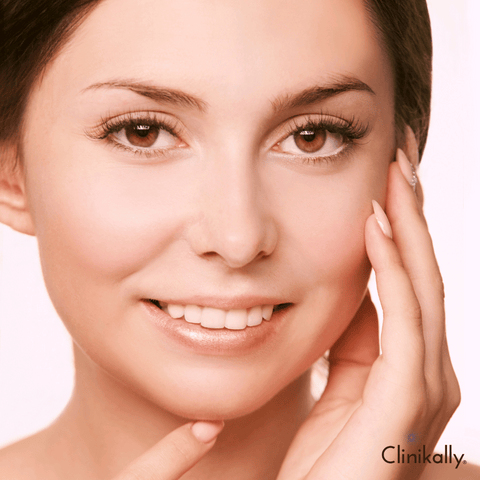
Whiteheads, also known as closed comedones, are a type of acne that occurs when pores become clogged with oil, dead skin cells, and bacteria. If left untreated, whiteheads can become inflamed and turn into pimples. Fortunately, there are several simple hacks you can try to remove whiteheads permanently:
-
Cleanse your face twice a day: Keeping your skin clean is essential to prevent whiteheads. Wash your face twice a day with a gentle cleanser that is free of harsh chemicals and fragrances.
-
Exfoliate regularly: Regular exfoliation helps remove dead skin cells that can clog pores and lead to whiteheads. Use a gentle exfoliant, such as a scrub or a chemical exfoliant containing alpha-hydroxy acids (AHAs) or beta-hydroxy acids (BHAs), once or twice a week.
-
Use a clay mask: Clay masks help absorb excess oil from the skin and can be effective in removing whiteheads. Apply a clay mask once a week to reduce the appearance of whiteheads.
-
Avoid touching your face: Touching your face can transfer bacteria and oil from your hands to your skin, which can lead to whiteheads. Avoid touching your face, and if you must touch it, wash your hands first.
-
Use oil-free products: Oil-based products can clog pores and lead to whiteheads. Choose oil-free products, including makeup, moisturizers, and sunscreen, to prevent whiteheads.
-
Keep your hair off your face: Hair products can contain oils and other ingredients that can clog pores and lead to whiteheads. Keep your hair off your face and avoid using hair products that contain oils or other pore-clogging ingredients.
-
Consult a dermatologist: If your whiteheads persist despite your best efforts, or if you experience other symptoms such as redness or inflammation, consult a dermatologist. They may recommend prescription-strength treatments, such as topical retinoids or oral medications, to help clear your skin.















